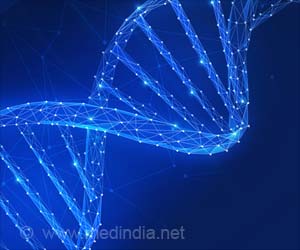Researchers have created more than 100 three-dimensional (3D) nanostructures using DNA building blocks that function like Lego® bricks.

The nanofabrication technique, called "DNA-brick self-assembly," uses short, synthetic strands of DNA that work like interlocking Lego® bricks. It capitalizes on the ability to program DNA to form into predesigned shapes thanks to the underlying "recipe" of DNA base pairs: A (adenosine) only binds to T (thymine) and C (cytosine) only binds to G (guanine).
Earlier this year, the Wyss team reported in Nature how they could create a collection of 2D shapes by stacking one DNA brick (42 bases in length) upon another.
But there's a "twist" in the new method required to build in 3D.
The trick is to start with an even smaller DNA brick (32 bases in length), which changes the orientation of every matched-up pair of bricks to a 90 degree angle—giving every two Legos® a 3D shape. In this way, the team can use these bricks to build "out" in addition to "up," and eventually form 3D structures, such as a 25-nanometer solid cube containing hundreds of bricks. The cube becomes a "master" DNA "molecular canvas"; in this case, the canvas was comprised of 1000 so-called "voxels," which correspond to eight base-pairs and measure about 2.5 nanometers in size – meaning this is architecture at its tiniest.
The master canvas is where the modularity comes in: by simply selecting subsets of specific DNA bricks from the large cubic structure, the team built 102 3D structures with sophisticated surface features, as well as intricate interior cavities and tunnels.
Advertisement
Another method used to build 3D structures, called DNA origami, is tougher to use to build complex shapes, Yin said, because it relies on a long "scaffold" strand of DNA that folds to interact with hundreds of shorter "staple" strands – and each new shape requires a new scaffold routing strategy and hence new staples. In contrast, the DNA brick method does not use any scaffold strand and therefore has a modular architecture; each brick can be added or removed independently.
Advertisement
Source-Eurekalert












